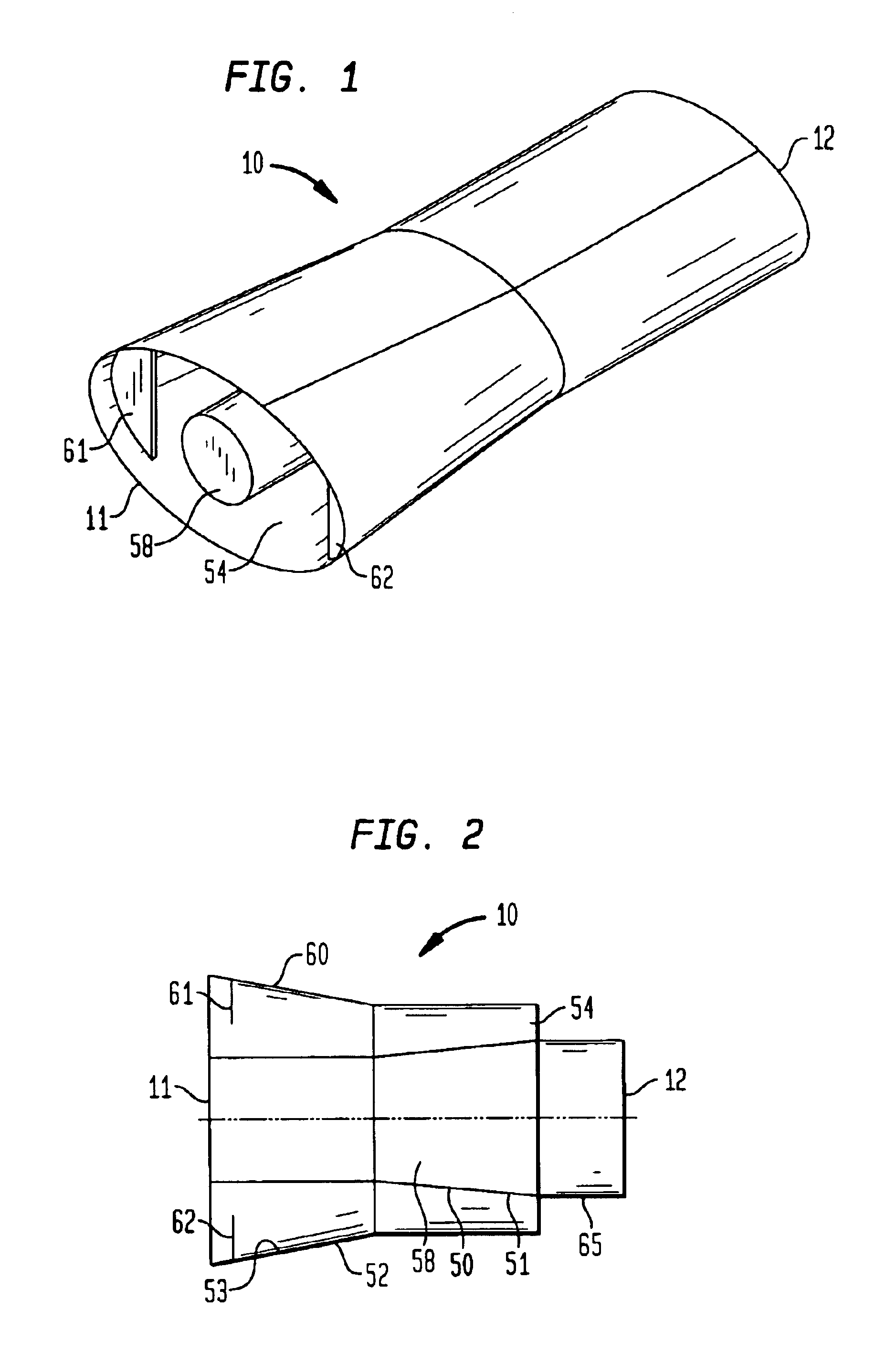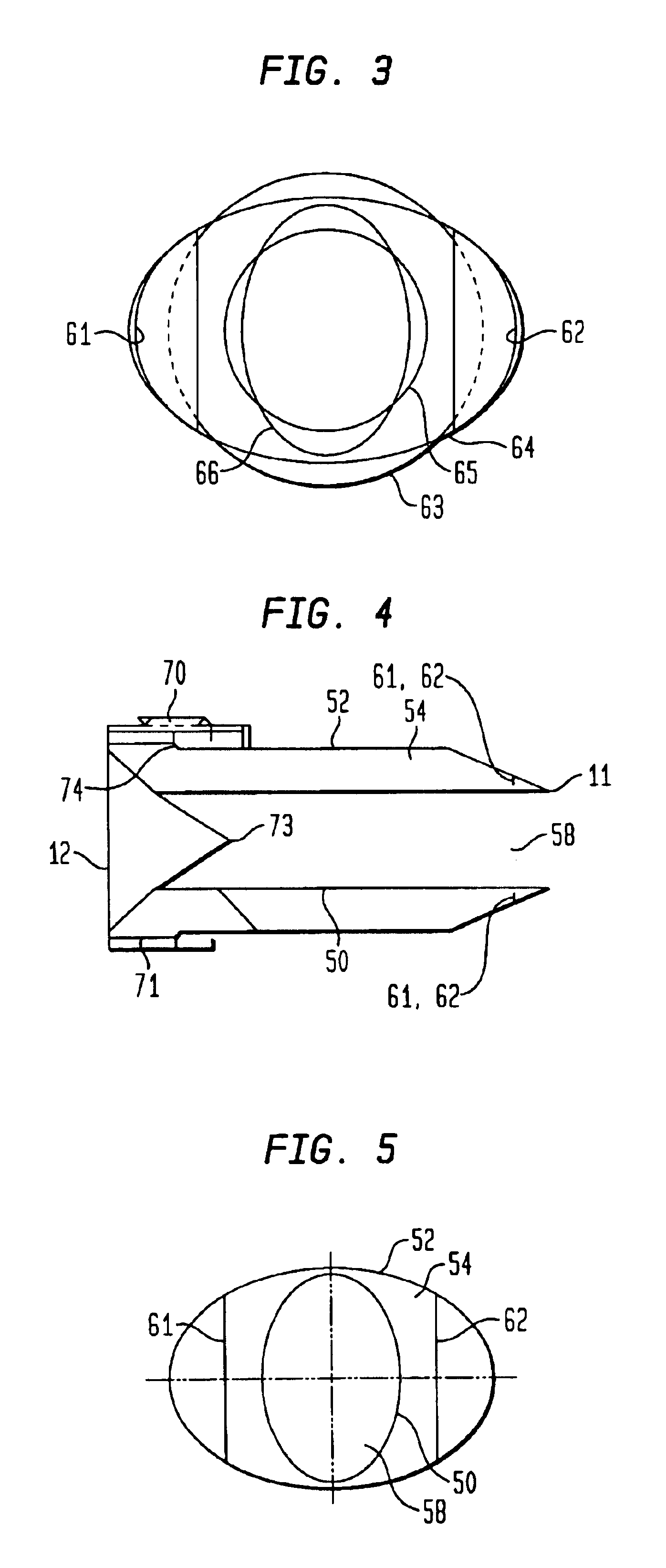Overfire air port and furnace system
a furnace system and air port technology, applied in the field of furnace systems, can solve the problems of reducing affecting the efficiency of air ports, so as to and reduce the amount of ubc and co
- Summary
- Abstract
- Description
- Claims
- Application Information
AI Technical Summary
Benefits of technology
Problems solved by technology
Method used
Image
Examples
Embodiment Construction
[0046]As shown in FIGS. 1 and 2 an overfire air (OFA) port 10 of the present invention includes an outlet end 11 and an inlet end 12. In the preferred embodiment of FIG. 1, the OFA port 10 is generally tapered from a relatively large elliptical diameter at the outlet end 11 to a relatively circular diameter at the inlet end 12. The materials of which the OFA port may be made are conventional and may include various materials capable of withstanding extreme heat, such as iron, steel, ceramic or the like.
[0047]As shown in FIG. 2, the OFA port 10 includes an elongated inner barrel 50 defining an inner passageway 58 and an elongated outer barrel 52 that surrounds inner barrel 50 and extends substantially coaxially therewith.
[0048]An outer passageway 54 is formed between the inner barrel 50 and the outer barrel 52. Both the inner passageway 58 and outer passageway 54 are generally annular and are used as flow paths for reinjecting OFA into and associated the furnace.
[0049]As shown in FIG...
PUM
 Login to View More
Login to View More Abstract
Description
Claims
Application Information
 Login to View More
Login to View More - R&D
- Intellectual Property
- Life Sciences
- Materials
- Tech Scout
- Unparalleled Data Quality
- Higher Quality Content
- 60% Fewer Hallucinations
Browse by: Latest US Patents, China's latest patents, Technical Efficacy Thesaurus, Application Domain, Technology Topic, Popular Technical Reports.
© 2025 PatSnap. All rights reserved.Legal|Privacy policy|Modern Slavery Act Transparency Statement|Sitemap|About US| Contact US: help@patsnap.com



